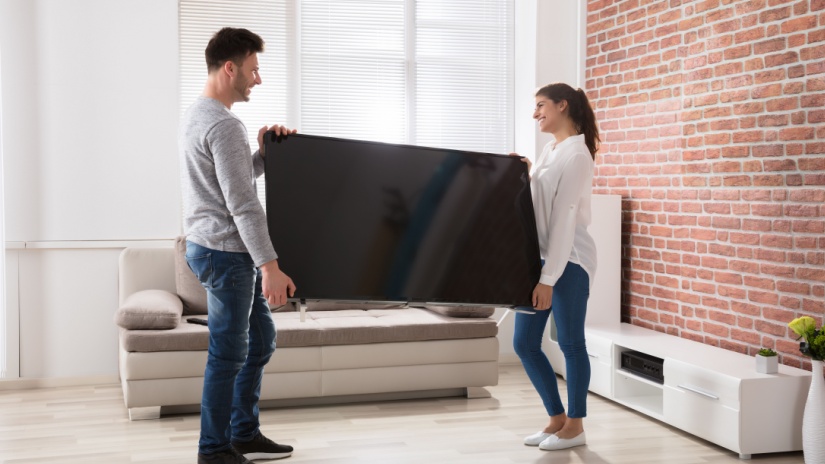Knowledge Centre
What appliances are draining your electricity?

When the electricity bill arrives and causes a bit of sticker shock, it’s natural to wonder where all that energy is going. In many Australian homes, there are certain appliances that quietly drain your electricity without you even noticing.
While some appliances are obvious energy hogs, others might surprise you with how much they contribute to your monthly costs.
Let's explore the key appliances in your home that may be draining your electricity, provide tips on how to reduce energy consumption, and offer some practical advice for managing your electricity usage without sacrificing comfort.
Air conditioners and heaters: The major energy hogs
In Australia, air conditioning is essential for surviving the summer heat, and heating is a must during the chilly winters. But when these appliances are running, they are often the top offenders when it comes to draining your electricity.
Air conditioners
The energy usage of an air conditioner can be substantial, especially if it's cooling a large space or is running for extended periods. Air conditioning units generally use between 1.5 kW to 5 kW per hour, depending on their size and efficiency.
In summer, if your air conditioner is running all day, it can account for up to 40% of your monthly energy consumption.
Heaters
Electric heaters, especially the older models, can consume a lot of energy. Heaters draw significant power when running continuously, with some of the more inefficient models using as much as 2 kW to 3 kW per hour. In colder months, heating can make up a large portion of your energy bill, often around 30% to 40%.
Fridges and freezers: The 24/7 energy drainers
Your fridge and freezer are running non-stop, every single day of the year, and they can account for a significant portion of your electricity usage.
Fridges
A standard fridge can consume anywhere between 100 to 800 kWh annually, depending on its size, age, and energy efficiency rating. Older fridges tend to be less efficient, so replacing an old model with a more energy-efficient one could save you a fair amount of electricity.
Freezers
If you have a second freezer, it can also be a major drain. A standalone freezer uses around 200 to 500 kWh annually, but if it’s a second-hand or older model, it may be using far more energy than that.
Washing machines and dryers: Frequent usage can add up
Doing laundry seems harmless enough, but when you’re washing clothes frequently or using the dryer often, the energy costs can quickly add up.
Washing machines
Modern washing machines are fairly energy-efficient, using around 0.3 kWh to 1 kWh per cycle. But older machines, or those with inefficient washing modes, can use more energy. If you’re running multiple loads each week, this can significantly increase your energy consumption.
Dryers
Dryers are particularly power-hungry. On average, a tumble dryer uses around 2 kW to 5 kW per cycle, depending on the model and the cycle length. Drying clothes frequently during winter, when the weather is too damp to air-dry them, can cause your electricity bill to rise considerably.
Electric ovens and stovetops: Heating up your costs
Cooking is another activity that can quickly add up in terms of electricity usage. While gas cooktops are generally cheaper to run, electric ovens and stovetops tend to be more costly in terms of energy consumption.
Electric ovens
An electric oven can consume between 2 kWh to 2.5 kWh per hour, depending on the temperature setting and cooking time. Preheating, baking, and using the oven for extended periods (such as when cooking a large meal) all contribute to increased electricity usage.
Stovetops
Electric cooktops also use significant power, with an induction cooktop using around 1.4 kW to 2.2 kW per hour depending on the settings. Electric stovetops (non-induction) can be less efficient, drawing even more energy to heat up the coils.
Televisions and entertainment systems: Power drains that you might not notice
Modern entertainment systems are often more energy-efficient than their predecessors, but they can still eat up electricity if left on for too long.
Televisions
Depending on the size and type, a flat-screen TV can use anywhere from 0.1 kWh to 0.4 kWh per hour. Larger screens, like 55-inch or 65-inch TVs, will typically consume more. If you leave your TV on standby mode rather than turning it off completely, it can still draw power, contributing to your bill.
Home entertainment systems
Amplifiers, sound systems, and other connected devices like gaming consoles can also use significant amounts of energy when left on. A gaming console can draw anywhere between 0.2 kWh to 0.5 kWh per hour of use.
Computers and chargers: The sneaky energy drainers
You might not realise it, but computers and other electronics can consume a surprising amount of electricity over time.
Desktops
Desktop computers generally use between 0.2 kWh to 0.5 kWh per hour. If left running throughout the day, particularly with high-performance systems, they can add up quickly.
Laptops
Laptops are far more efficient, consuming around 0.05 kWh to 0.1 kWh per hour of use. However, charging them regularly can still impact your electricity bill over time.
Phone and tablet chargers
While phone chargers use very little electricity, they still contribute to overall consumption. Leaving chargers plugged in when not in use (even if the phone isn’t charging) is known as ‘phantom’ or ‘vampire’ energy usage, and it can cost you a few extra dollars each month.
Standby power: The hidden drain
Even when appliances are turned off, they can still be consuming electricity if they’re left in standby mode. These “vampire devices” can be responsible for up to 10% of your home’s energy consumption.
Common appliances that often stay in standby mode include:
- Microwaves: Even when off, the clock and electronic controls use power.
- Set-top boxes: Many people leave their set-top boxes on standby, which continues to draw power even when not in use.
- Home electronics: Items like printers, coffee machines, and smart speakers, when left plugged in, can all consume small amounts of electricity.
How to reduce energy consumption
Reducing the energy drain from these appliances doesn’t mean sacrificing comfort. Here are a few simple tips to cut your electricity costs:
- Use energy-efficient appliances: Replace older appliances with more energy-efficient models. Look for the Energy Rating label, which indicates the energy consumption of the appliance.
- Switch to LED bulbs: Lighting can account for a significant portion of your electricity bill. Switching to energy-efficient LED bulbs can reduce lighting costs by up to 80%.
- Adjust your thermostat: In winter, try to keep your heater settings lower, and in summer, set your air conditioner to a higher temperature. A slight increase or decrease in temperature can make a significant difference in your energy consumption.
- Unplug when not in use: Unplugging appliances or using a power strip with a switch to cut off the power supply entirely can prevent standby power consumption.
- Use appliances wisely: Only run your washing machine and dryer with full loads. Use the washing machine’s eco-mode and line dry clothes when possible.
Call Compare Energy
Understanding what appliances are draining your electricity is the first step in controlling your energy costs. By being aware of which devices consume the most power and making small adjustments, you can save money and reduce your environmental impact.
From air conditioners to home entertainment systems, every appliance in your home plays a role in your overall electricity consumption. By swapping out older appliances, using energy-efficient alternatives, and being mindful of your energy habits, you’ll soon see a reduction in your energy bills.
For more advice on how to manage your electricity usage or to compare energy providers for the best rates in your area, don’t hesitate to call Compare Energy on 1300 790 106. We can help you find the best energy plans to suit your needs and save you money in the long run.

